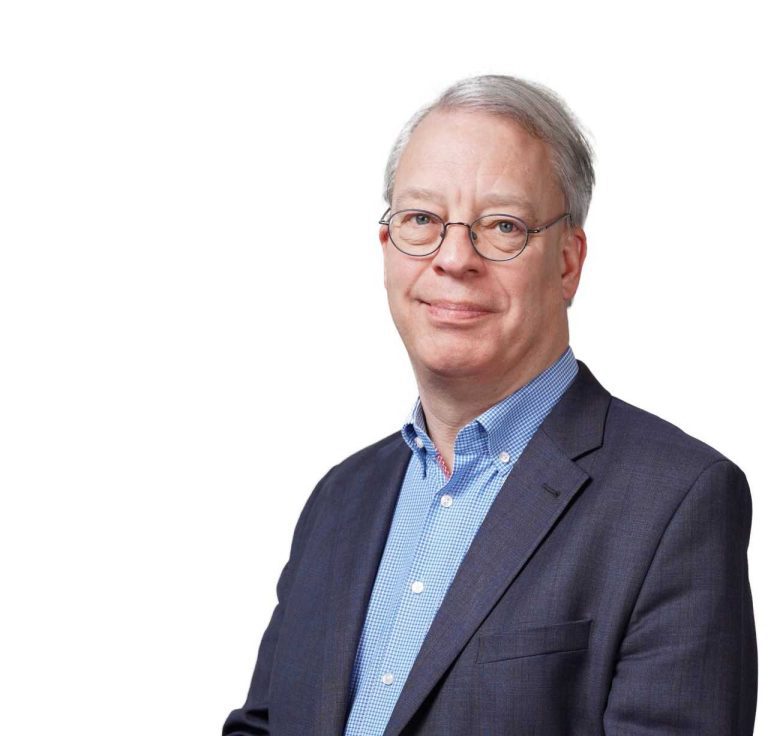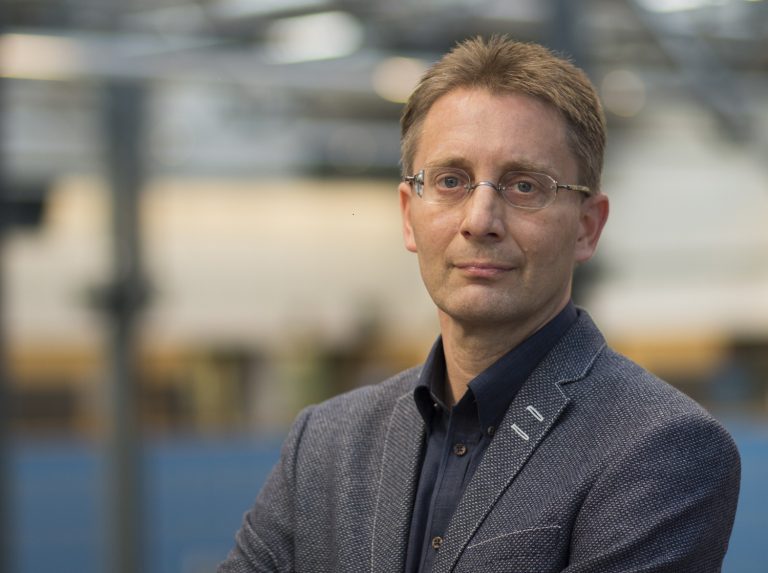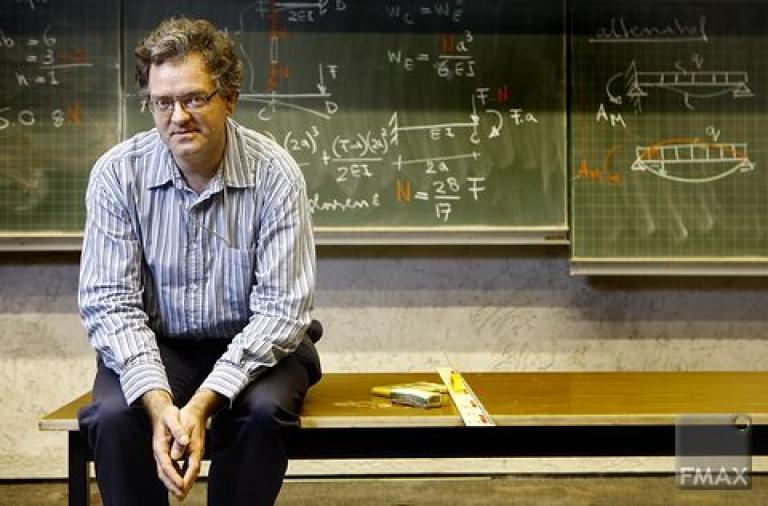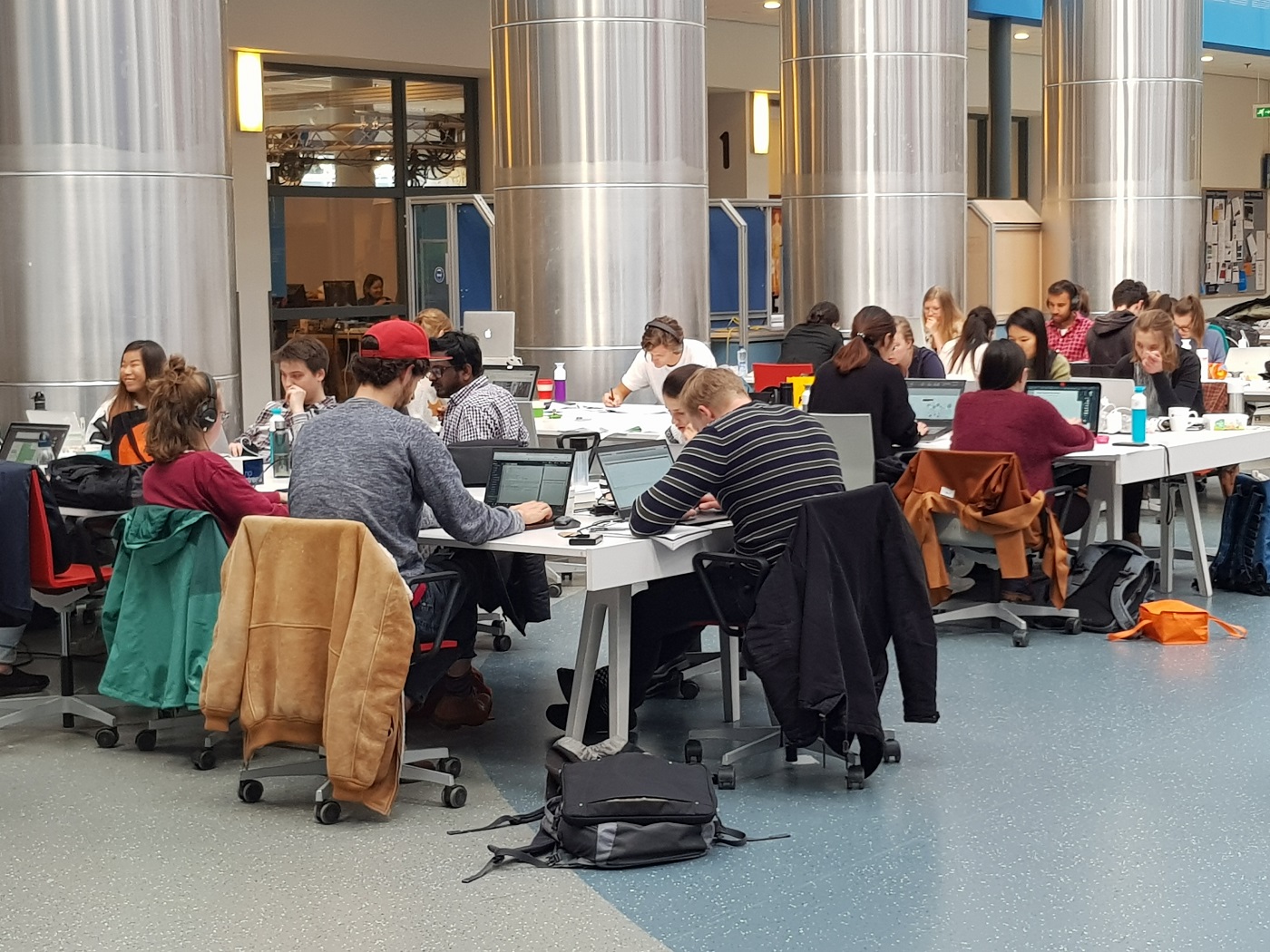TU Delft researchers have to contend with high workloads brought on by the huge rise in student numbers. Is ‘Van Rijn’ money for more staff the solution?
The number of students at TU Delft increased rapidly. (Photo: Connie van Uffelen)
“They are crowding at the door and some of them look really miserable, but you still have to say no, ‘No, I can’t take on any more students’. It’s so difficult. I have colleagues that are supervising 20 graduates. That’s just about impossible. You may be really big hearted, but that heart will stop beating at a certain point.”
These are the words of Hans Hellendoorn, Professor of Cognitive Robotics and Director of Education at the Faculty of Mechanical, Maritime and Materials Engineering (3mE). He is wrestling with the huge number of students that need supervision. And he is not the only one.
The student-staff ratio at TU Delft has taken an unusual course over the last few decades. In the 2019 annual report, the number of students in the preceding 10 years grew by over 50%. This growth increased the student-staff ratio from about 15 students to one staff member to about 19 to 1.
EUR 19 million for education
But this will change. The higher education and research funding system went through the mill last year in an attempt to better align education and research. The review, drawn up by PvdA (Labour Party) member Martin van Rijn, turned out well for TU Delft. This year, TU Delft will receive about EUR 19 million of Van Rijn monies to hire staff and introduce changes to its education system.
Delta did the rounds to see what this monetary injection means for various faculties. Will the Van Rijn fund relieve the high teaching pressure?


The current ratio of 19 to one is only an average. There are extremes, such as 3mE that has a ratio of 35 to one. The number of students there doubled to 5,000 over 10 years. The scientific staff has remained about the same and consists of about 140 assistant professors, associate professors and professors.
The Van Rijn fund will allow 3mE to hire 14 teachers this year and the beginning of next year. Most of them will be young recently graduated engineers. While this makes Hellendoorn happy, he does not believe it is the solution. “We’re absolutely not there yet. This is only a 10% expansion of our teaching staff.”
Luckily, his Faculty can also count on the Ministry of Education, Culture and Science’s sectorplangelden (lit. monies for sector plans, eds.). This will allow the hiring of 17 researchers over the next few years. They will include assistant professors, associate professors, professors and tenure trackers. Tenure trackers are young career researchers who aspire to a permanent position as assistant professor, associate professor or professor.
Hellendoorn believes that to lighten the teaching burden, more needs to be done. “We will not have a numerus fixus as this is not permitted by the Government. We can’t introduce it anyway as society needs all the mechanical engineers it can get. On the Clinical Technology course, all we can do is slow down numbers. We will have to cut down on the rapid growth of master programmes. Many researchers want to tailor their masters to their chairs. I would like everyone to be able to do this, but it’s not always possible.”
How will you handle taking on new staff? “It’s not like researchers are there for the taking. It’s a tight market. The fields of biomechanics, maritime technology and systems and control are very popular among students. And it’s exactly in these fields that it’s really hard to find staff. All the technical universities in the Netherlands and surrounding countries are trying to attract them.”
What do the directors of education and advisors in the other faculties say?


The Faculty of Applied Sciences is also stretched to its limits. The number of students has tripled over the last 20 years, while the number of staff has remained about the same.
The adage at AS is that scientists spend 70% of their time on research and 30% on teaching. “The Van Rijn monies will let us hire four tenure trackers which will help reverse this proportion,” says Director of Education and Professor of Chemical Engineering, Chris Kleijn. Depending on their educational achievements, they could make it to assistant professor, associate professor or professor. “TU Delft recently established this new system which evaluates employees on different criteria.”
Eight junior teachers have also been appointed. They are postdocs who spend half their time on teaching and the rest on the University Teaching Qualification certificate. “This certainly helps ease the work pressure,” says Kleijn. “We are putting twice as much time into teaching now with corona.”


In IDE, the ratio between education and research is about one scientist for every 12 or 13 students. A good balance. “Nevertheless, during an accreditation last year, the Faculty was urged to strengthen the link between education and research,” says Professor of Circular Product Design, Ruud Balkenende.
“If you want to give good education, with enough critical reflection, you need a lot of scientific research. Our scientists should be able to spend at least 40% of their time on research and the rest of their time on education and administration. We now often don’t even reach that 40%.”
The Faculty will use the Van Rijn money to hire 10 tenure trackers this year to change this. “In the recruitment process, we emphasised the teaching aspect. Normally you would let tenure trackers have a couple of years to grow into the role of teacher. But now we took care that the candidates already had experience in teaching.”


“It’s not like we won the lottery, but the Van Rijn money will certainly help,” says Director of Education Hans Welleman of the Faculty of Civil Engineering and Geosciences (CEG). “We can now deal with the structural problems in the teaching which we could not do with the current budgets. All the departments are under pressure. We will use the Van Rijn money to try to bring things into balance.”
“Over the last decade the Faculty remained on its baseline. The people who left were usually replaced, but no new staff members were added. It’s exceptional that we can expand our staff body.”
CEG will get six tenure trackers and extra support for teaching. They will eventually use half their time on teaching and everything that goes with it. “We are looking out for new people, and it’s going well. A lot of people around the world are interested in a career at TU Delft.”
The Van Rijn funds will also be used for other things such as blended learning, a blend of face-to-face and online teaching.
Welleman points out that over the last years more and more time-consuming secondary activities have landed on researchers’ plates. “Take simple things like printing out attendance lists for exams. The teacher has to do this now as, in line with the GDPR, he/she is the only one that has access to all the students’ details. This may only be a small thing, but all the small things add up. Teachers do a lot more than only teach. We would like to create more quality time for teachers to teach. To do this, the secondary activities will have to be reduced. The Van Rijn money will be used for this as well.”
Do you have a question or comment about this article?
tomas.vandijk@tudelft.nl


Comments are closed.